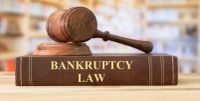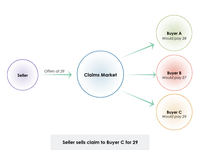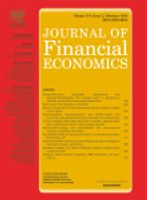Explore web search results related to this domain and discover relevant information.

Understanding the bankruptcy claims trading market is crucial for those who deal with distressed assets, whether for clients or as investors themselves.
Intellectual Property (Incl. Trademarks/Secrets, Copyrights, and Patents) (1) ... Bankruptcy claims trading is an essential area of finance and law, where investors buy and sell the right to receive payments from a company undergoing bankruptcy. Understanding the intricacies of this market is crucial for legal professionals, accountants, and financial advisors who deal with distressed assets, whether for clients or as investors themselves.These claims can be bought at a discount with the expectation that they will pay out a portion of the total claims pool. David Karp, a partner at Schulte Roth & Zabel, highlights that although secured debt like bank loans or bonds often receives attention from specialized traders, most bankruptcy claims traded are general unsecured claims.The types of claims traded most often are general unsecured claims.Intellectual Property (Incl. Trademarks/Secrets (1)
Applications for US unemployment benefits rose to the highest since June, with initial claims increasing by 8,000 to 237,000 in the week ended Aug. 30. Meanwhile, the US trade deficit widened in July to a four-month high as the goods and services trade gap grew nearly 33% from the prior month ...
Applications for US unemployment benefits rose to the highest since June, with initial claims increasing by 8,000 to 237,000 in the week ended Aug. 30. Meanwhile, the US trade deficit widened in July to a four-month high as the goods and services trade gap grew nearly 33% from the prior month to $78.3 billion.

Bankruptcy claims trading is an essential area of finance and law, where investors buy and sell the right to receive payments from a company undergoing bankruptcy. Understanding the intricacies of this market is crucial for legal professionals, accountants, and financial advisors who deal with ...
Bankruptcy claims trading is an essential area of finance and law, where investors buy and sell the right to receive payments from a company undergoing bankruptcy. Understanding the intricacies of this market is crucial for legal professionals, accountants, and financial advisors who deal with distressed assets, whether for clients or as investors themselves.Understanding bankruptcy claims trading, including secured claims, unsecured claims, and equity claims. Learn about legal frameworks and risks involvedThese claims can be bought at a discount with the expectation that they will pay out a portion of the total claims pool. David Karp, a partner at Schulte Roth & Zabel, highlights that although secured debt like bank loans or bonds often receives attention from specialized traders, most bankruptcy claims traded are general unsecured claims.The types of claims traded most often are general unsecured claims.

Claims Market [1] is a market for trade claims that solves the three biggest issues in trade claims: helping sellers get the best price, providing transparent closing documents, and a structuring…
Claims Market [1] is a market for trade claims that solves the three biggest issues in trade claims: helping sellers get the best price, providing transparent closing documents, and a structuring predictable closing process. “Trade claim” is a catch-all term for claims in a bankruptcy case that are not debts for money borrowed.In most bankruptcy cases, the largest amount of claims are for money borrowed by the bankrupt debtor, such as bonds evidenced by a bond indenture, or loans evidenced by a credit agreement. The underlying basis of a trade claim is usually the extension of credit by a supplier or a service provider.If a contract is rejected by the debtor as part of its bankruptcy case, the vendor will have a claim for the difference between the contract price, and the market price the vendor was able to obtain from a third party, over the term of the contract. Market prices can be based on actual prices the vendor was able to obtain or published quotes from a reliable source. There is no centralized market for trade claims.It is a classic over-the-counter voice market where sellers and buyers negotiate and settle transactions telephonically and by emailing documents. Claims trade either directly from a seller to a buyer, or indirectly from a seller through a broker to a buyer.[2] The trade claims market is imbalanced.

Instead, the IRS reviews your trading activity. They look at how often you trade, why you trade, and how consistent you are before deciding if you’re an investor or running a trading business. That label determines how the IRS taxes your gains and which tax deductions you can claim.
Tax Hacks for Day Traders | Asset Protection | Anderson Business Advisors If you’ve been day trading for a while, you already know the market can be wild. One day you’re riding a win streak, the next you’re wondering if you should’ve pulled the plug sooner.Example: Imagine two people, each making $50,000 in profits—one as an investor, one as a trader. The investor might pay lower long-term capital gains rates if they held their positions for over a year. The trader, without special elections, could face ordinary income tax rates that push the bill thousands higher.Whether you’re hunting for tax strategies for day traders, figuring out how to avoid taxes on day trades, or just tired of high ordinary income tax rates on short-term gains, the right structure can make all the difference and help you reduce your federal tax liabilities.This one’s a game-changer. It turns all your trades into ordinary income or losses—no more capital gains rules.
Once a transaction is confirmed by Claims Market, a SAC signed by the Seller with all exhibits will be sent to the winning Buyer identified as “Buyer” in the SAC. If funds are not received by the Seller and Claims Market from the winning Buyer within three business days of the trade date, ...
Once a transaction is confirmed by Claims Market, a SAC signed by the Seller with all exhibits will be sent to the winning Buyer identified as “Buyer” in the SAC. If funds are not received by the Seller and Claims Market from the winning Buyer within three business days of the trade date, subject to any additional terms agreed to, the Seller’s claim will be offered to other Buyers.Buyers agree to pay Claims Market an Admin. Fee stated on the Trade Summary page with respect to each Seller’s claim.Claims Market is a platform dedicated to simplifying the market for trade claims.Cherokee Acquisition is providing liquidity on FTX claims. Please note that the below prices are for claims over $1m that have received a distribution. Actual prices may be higher or lower, depending on claim size and quality.

Using a novel data set that covers individual debt claims against 136 bankrupt US companies and includes information on a subset of claims transfers, …
Our data set captures trading during bankruptcy cases through disclosures of Rule 3001(e) transfers, composed chiefly of trade credit, canceled leases, and debt instruments not registered with the Securities and Exchange Commission (SEC) or a loan syndicate. We find that Rule 3001(e) trading increases creditor concentration during bankruptcy. For example, by the end of the bankruptcy process, firms in the top tercile of trading intensity—measured as total in-bankruptcy trading volume scaled by the total amount of claims outstanding—have voting claims that are 16 percentage points more concentrated than firms in the bottom tercile, which is a difference of nearly one standard deviation.This finding is robust under a variety of specifications and to an instrumental variables approach that uses characteristics of trade credit [a proxy for the propensity to trade 3001(e) claims] to instrument for creditor ownership concentration at bankruptcy exit.Modern debt markets allow for extensive trading in the claims of distressed firms, including not only bonds and bank debt, but also trade credit and lease, tax, insurance, and derivative claims.Many of these increases in ownership concentration occur as the result of consolidation of claims through purchases from trade creditors.

Make sure you claim tax relief on your pre-trading expenses when you start trading as a sole trader or limited company to reduce your tax bill
Whether you’re starting out as a sole trader or setting up a limited company, upfront costs are likely to be necessary and can make the thought of paying taxes as soon as you generate any profit off-putting. Fortunately, our experts are on hand to guide you through the rules on tax relief for pre-trading expenses allowing you to claim a tax deduction as well as reassure you that your initial capital has been put towards worthwhile long-term business goals.The expenses must be “wholly and exclusively for the purpose of the trade” which means it cannot have a personal benefit. For example, you’re getting ready to open your own business and you buy a new mobile phone. If you’re using it for personal, non-work-related calls then this is unlikely to qualify (but you may still be able to claim a portion of your phone bill instead).Sole traders and partnerships can claim for their pre-trading expenses through their self-assessment tax return or partnership return. This must be done by the 31st January after the end of the tax year in which you began trading through your business and the costs incurred must be within 7 years of when you began trading.The most crucial first step to being able to claim for pre-trading expenses as a sole trader is to register for self-employment with HMRC. You should do this as early as possible once you have decided that you will be running your own business and predict it will generate more than £1,000 per year.
Consistently ranked among the best lawyers in Delaware and America, we know how to help you navigate the legal landscape when it matters most.
The repository is a service of the Georgetown University Law Center libraries. Research and scholarly output included here has been selected and deposited by the individual university departments and centers on campus · Top 10 DownloadsAll time Recent Additions20 most recent additionsActivity ...
Rather than wait for a distribution, following the bankrupt debtor’s claims administration process, creditors with unsecured claims against an insolvency estate have the option to trade their claims, which can avoid the uncertainty and delay of being an expectant creditor.
So how does a claim trade work, and what are the key issues for a “selling” creditor? A creditor with claims against a debtor in an insolvency estate is able to trade such claims by way of an assignment of its rights to a third party “buyer.” In the airline context, the rights to be assigned under the trade include all of the creditor’s rights arising under the lease or other deal-related documents, including, its rights to receive the distribution from the insolvency estate afforded to the creditor’s claim.In either case, the creditor, as seller, would enter into an agreement with the buyer to sell the principal amount of the filed or proven claim for an agreed price. Claims are traded below par, so the sale price will represent an agreed discount to the principal amount of the claim.The trade confirmation is a relatively short document setting out the key commercial terms, such as the principal amount of the filed claim, the purchase price and any conditions to completion of the assignment.Although it is similar to a term sheet or letter of intent, the trade confirmation is a legally binding document and constitutes an agreement to trade the relevant claims subject to completion of any agreed conditions and the signing of the assignment of claim.

It is important to be aware of the financial and legal risks of bankruptcy claims trading.
Intellectual Property (Incl. Trademarks/Secrets, Copyrights, and Patents) (1) ... Tags: Automatic Stay, Chapter 11 Plans/Confirmation, Claims, Claims Trading, Insolvency, Priorities,This includes claims for goods sold, services rendered, or damages asserted by contract counterparties such as landlords or professional service providers. Terminated financial contracts (e.g., ISDA agreements) form the basis for another frequently traded type of claim in past years.There are no electronic settlements and no public exchanges; instead, parties negotiate, execute, and deliver written contracts (either bespoke or in the form recommended by a trade association). Although it’s never been finally determined by the US Supreme Court, the view of most commentators and market participants is that bankruptcy claims are not securities and, therefore, federal securities laws do not apply to claims trading transactions.The first step in documenting a claims transfer is often executing what is known in the market as a trade confirmation. The trade confirmation records the basic agreed-upon terms of trade, such as price, quantity, and any special conditions to closing.

What in the world is claims trading? And how does it work? In this article, we provide an in-depth overview on the background of Chapter 11 bankruptcy, the complexities that affect claim recovery and how it yields opportunities for creditors through bankruptcy claims trading.
Opportunistic buyers purchased these claims against the insolvent colonies at discounted prices in hopes of eventually recovering full repayment under the establishment of a new American government. This is the first historically recorded instance in the US where claims were traded.Just as Creditors involved in a bankruptcy case can be an individual, a company, or a major corporation, similarly, Buyers—or bankruptcy claim traders—can come in all shapes and sizes. A Buyer of a claim might be a hedge fund, a trading division of an investment bank, a private investment company, or even an individual licensed as an accredited investor.While not a party to the claim being traded, a bankruptcy claims agent may be logistically involved as a contracted partner of the Debtor within a bankruptcy court case and act as the approved legal administrator for the Claims Registrar.Any legal objections, dismissals, or modifications to payment terms on claims are ruled by and approved by the bankruptcy court. The primary motivation for a Creditor to trade their bankruptcy claim is to obtain immediate cash liquidity on an otherwise uncollectible account.


Sullivan added that in cases where a fund itself is the target of a claim following a trading error, fund D&O/E&O coverage may be triggered. · “If a trade error causes a loss to a fund and a third-party claim is made against the fund and its directors/trustees alleging a breach of duty ...
Sullivan added that in cases where a fund itself is the target of a claim following a trading error, fund D&O/E&O coverage may be triggered. · “If a trade error causes a loss to a fund and a third-party claim is made against the fund and its directors/trustees alleging a breach of duty or other covered act, this may trigger coverage under the fund’s D&O/E&O liability policy,” he said.“All policies require claims, as defined, to be reported within a certain period of time once a predetermined set of individuals become aware of the claim. · “Taking steps to further improve internal communication, such as incorporating insurance reporting procedures into the firm’s trade error manual, will mitigate the risk of coverage challenges due to late reporting.”Market volatility and insurance gaps are common as tariff pressures loomAdditionally, most policies require insurer approval before law firms are retained or defense costs are incurred. “Reviewing and understanding these requirements in advance will reduce friction if a loss or claim occurs,” he said.

The Unemployment Claims lesson discusses where to find it, how to forecast it, how it’s influenced, and how it influences financial markets and the economy. Unemployment claims is a high-frequently indicator and useful because analyzing the number of people that lose their jobs can provide ...
Learn More About IBKR 1. IBKR Lite provides commission-free trades in US exchange-listed stocks and ETFs. For complete information, see ibkr.com/commissions. ... To watch this video you must accept functional cookies. Manage Cookies. ... Each state’s unemployment office reports their unemployment claims to the federal, U.S.The reason why the report is published is because one of the first signals of economic trouble is when people start to lose their jobs and start filing unemployment claims. Wall street cares a lot about this report. The number of layoffs is important. The report offers highlights from individual states. For example, California may have progressed from the prior period due to fewer layoffs in the leisure and hospitality sector. On the flip side, Pennsylvania may have regressed from the prior period due to increased layoffs in the retail trade industry.The Unemployment Claims lesson discusses where to find it, how to forecast it, how it’s influenced, and how it influences financial markets and the economy. Unemployment claims is a high-frequently indicator and useful because analyzing the number of people that lose their jobs can provide insights on the direction of economic prospects.There are two segments of unemployment claims included in the report— Initial claims tell us how many people filed new unemployment claims after losing their jobs in a given week, while continuing claims tell us how many people continue to be unemployed. When people get “laid off”, incomes and production across the economy go down, this is bad for financial assets.

Trading income allowance lets you earn up to £1,000 tax-free before registering for tax. You can either claim the allowance or deduct actual expenses.
However, since 2017, sole traders earning less than £1,000 a year have not been required to register for Self Assessment. The trading allowance was introduced to provide tax relief for low-income earners with minimal or no business expenses. If your total trading income is £1,000 or less, you can claim ‘full relief’ using the trading allowance, which reduces your taxable income to zero.Claim marketing expenses like advertising, mailshots, free samples, and website costs are allowable. However, clients’ entertainment or hospitality expenses cannot be claimed. Subscriptions to trade journals and professional bodies are allowed, but political donations, gym memberships, and most charity donations are excluded.If your trading income exceeds £1,000, you can still benefit by claiming ‘partial relief’ of the trading allowance. In this situation, £1,000 is deducted from your gross income, and you pay tax only on the remaining amount.Income above £1,000: If your total property or trading income exceeds £1,000, you must register for Self Assessment and file a tax return. You can then claim the trading allowance by deducting it from your gross income, reducing your taxable profit.
Bankruptcy claims trading is an essential area of finance and law, where investors buy and sell the right to receive payments from a company undergoing bankruptcy. Understanding the intricacies of this market is crucial for legal professionals, accountants, and financial advisors who deal with ...
Bankruptcy claims trading is an essential area of finance and law, where investors buy and sell the right to receive payments from a company undergoing bankruptcy. Understanding the intricacies of this market is crucial for legal professionals, accountants, and financial advisors who deal with distressed assets, whether for clients or as investors themselves.Understanding bankruptcy claims trading, including secured claims, unsecured claims, and equity claims. Learn about legal frameworks and risks involvedThese claims can be bought at a discount with the expectation that they will pay out a portion of the total claims pool. David Karp, a partner at Schulte Roth & Zabel, highlights that although secured debt like bank loans or bonds often receives attention from specialized traders, most bankruptcy claims traded are general unsecured claims.The types of claims traded most often are general unsecured claims.

When not managed properly, trade and transfer risk issues can push a potentially winning investment into losing territory. Schulte’s Distressed Debt & Claims Trading Group has extensive experience…
When not managed properly, trade and transfer risk issues can push a potentially winning investment into losing territory. Schulte’s Distressed Debt & Claims Trading Group has extensive experience advising broker-dealers, hedge funds, investment banks, CLOs and private equity funds on a wide range of U.S., European, Asia-Pacific and emerging markets debt and claims trading matters.The Group advises clients in structuring, preparing and negotiating deal-specific transaction documentation, including trade confirmations, debt and post-reorganization equity purchase and sale agreements, claim assignment agreements, participation agreements, proceeds letters, confidentiality agreements, “big boy” letters and bid procedure documentation.We regularly advise buy-side and sell-side clients at each stage of a debt or claims transaction. In addition to highlighting the risks associated with any given trade and formulating the optimal settlement or structuring options, we represent clients in the negotiation of trade confirmations, purchase and sale agreements, participation agreements, proceeds letters, and “big boy” letters.The Group’s lawyers structure, prepare, and negotiate the transaction documents, review and analyze the underlying proofs of claim and supporting documentation, and file any transfer notices. We address the various risk silos that can influence claims trades — including notional, recovery, and counterparty risk — to meet your needs.

Creditor Claims Trading is the purchase and sale of valid claims on debtors by creditors hesitant to participate in a reorganization.
As a result, the volume of claims trading tends to be higher for bankruptcies involving larger debtors where a complex restructuring is more probable. Selling a trade claim eliminates the delay associated with Chapter 11 and the risk of receiving partial or no recovery following the lengthy bankruptcy process.Certain creditors cannot tolerate the risk and desire no involvement in the reorganization process, which is why they often opt for immediate monetary compensation by selling their claim. Sellers will trade their claims to avoid the potentially time-consuming, drawn-out process of Chapter 11 and uncertainty regarding recoveries.As a result, even “decent” claim recoveries as part of the POR could result in profitable returns, given the hefty price discount. Another reason a buyer might knowingly purchase a high-risk trade claim is to accumulate a larger stake, which can pay off greatly if the reorganization pans out well for the lower stake claims, as well as give them more negotiating leverage (e.g., meetings held by unsecured creditor committees).Therefore, the vast majority of claims trading centers around trade claims, which are unsecured obligations of the debtors.

Lowenstein Sandler is a national law firm with more than 300 lawyers working from five offices in New York, New Jersey, California, Washington, D.C., and Utah.






